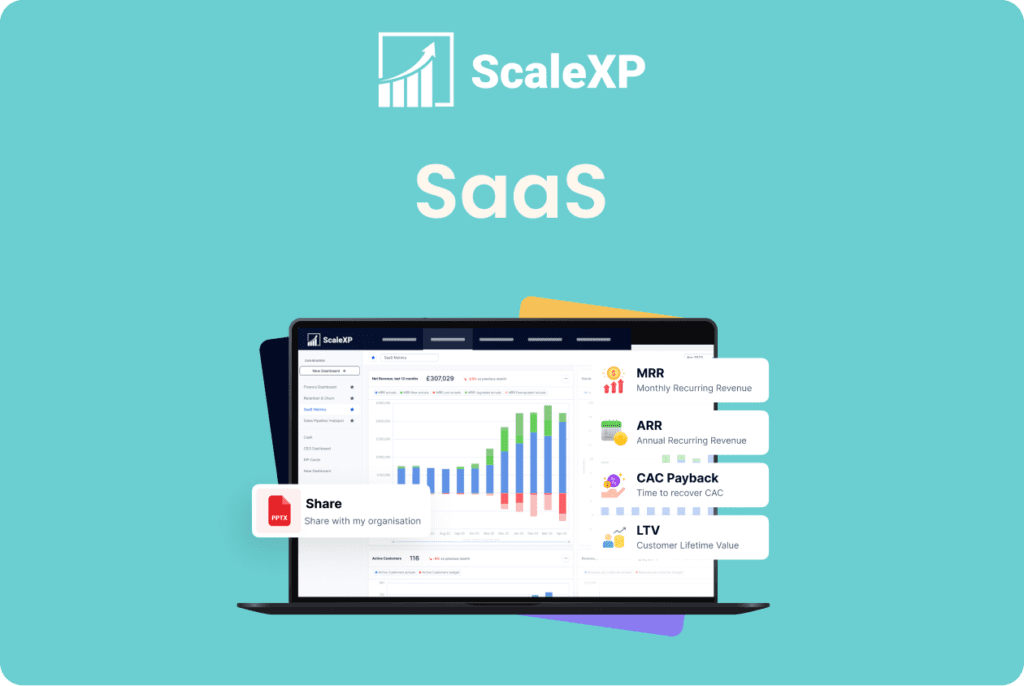To calculate your Monthly Recurring Revenue (MRR), start by determining whether your subscriptions are monthly or annual. For monthly subscriptions, multiply the total number of subscribers by the average revenue per user (ARPU). For annual subscriptions, divide the annual plan price by 12 and then multiply that result by the number of customers on the annual plan.
Introduction
Wondering how to calculate your Monthly Recurring Revenue (MRR)? In the ever-changing world of Software as a Service (SaaS), MRR is a critical metric. This guide is designed to demystify the process of MRR calculation, equipping you with the knowledge to track your financial performance effectively.
Understanding monthly recurring revenue (MRR)
At its core, Monthly Recurring Revenue (MRR) is a measure of your company’s predictable and normalised revenue in a month. It’s a financial compass that guides SaaS businesses in navigating through the complexities of revenue streams that are typically characterised by various subscription plans and customer segments. MRR is pivotal for understanding the scalability of your business, making informed strategic decisions, and presenting a transparent picture to investors and stakeholders. In essence, the “monthly recurring meaning” in revenue terms translates to the stability and predictability of income, which is vital for the long-term sustainability of a SaaS business.
The components of MRR
Mastering the art of MRR calculation involves understanding its key components. Each component reflects different aspects of your business’s revenue dynamics and offers insights into customer behaviour and business performance.
New MRR: This is the revenue generated from new customers acquired within the month. It’s a reflection of your business’s growth and market reach.
Lost (Churned) MRR: Represents the revenue lost due to customers cancelling or not renewing their subscriptions. It’s a critical indicator of customer satisfaction and product-market fit.
Reactivated MRR: Revenue regained from customers who had previously churned but have re-subscribed. This component can shed light on the effectiveness of your win-back strategies and the enduring appeal of your product.
Upgraded (Expansion) MRR: Comes from existing customers who have upgraded their subscription plans. It indicates increased customer engagement and satisfaction with your service.
Downgraded MRR: Occurs when existing customers switch to lower-tier subscription plans. It’s essential to monitor this to understand customer needs and potential areas for product improvement.
Each of these components plays a critical role in giving a comprehensive view of a company’s revenue health and trajectory. By analysing these elements, SaaS businesses can gain valuable insights into their operational effectiveness and customer lifecycle.
Step-by-step guide to calculate MRR
Calculating MRR can be straightforward by following these steps:
Identify Recurring Revenue Sources: Identify all recurring revenue sources, excluding one-time fees or variable usage fees.
Standardise Revenue Calculation: For different billing cycles, normalise the revenue to a monthly amount. For annual billing, divide the total payment by 12.
Calculate Individual Components: Add up the revenue from new customers, lost revenue from churned customers, revenue from reactivated customers, the increase from upgraded plans, and the decrease from downgraded plans.
Aggregate the Components: Combine New, Reactivated, and Upgraded MRR, then subtract Lost and Downgraded MRR for your net MRR.
Accuracy in this calculation is crucial, especially when considering discounts and pro-rata charges.
Leveraging MRR for business growth and forecasting
MRR is not just a number; it’s a tool for strategic growth and forecasting:
- Strategic Decision Making: MRR offers a clear view of your revenue trend, aiding in resource allocation, budgeting, and business strategy formulation.
- Forecasting and Planning: A consistent MRR enables accurate future revenue predictions, aiding in financial planning and setting growth targets.
- Investor Confidence: A strong MRR indicates sustainable growth potential, crucial for securing funding.
- Customer Behaviour Insights: MRR components like upgrades and churn provide insights into customer behaviour and product-market fit, guiding product development and customer retention strategies.
Advanced considerations in MRR calculation
Consider the following to maintain MRR calculation accuracy:
- Handling Discounts and Coupons: Account for any discounted pricing in your MRR calculations.
- Varying Subscription Terms: Normalise revenues from different subscription terms to a monthly rate.
- One-Time Charges and Add-Ons: Exclude one-time charges from MRR to avoid misleading revenue stability indications.
- Prorated Charges: Accurately calculate prorated MRR for mid-cycle plan changes.
ScaleXP: Streamlining MRR calculations for SaaS businesses
ScaleXP is your ally in simplifying MRR calculation with features like:
- Automated MRR Tracking: Reducing manual effort and calculation errors.
- Integration with Accounting and CRM Systems: Ensuring up-to-date and accurate data for MRR calculations.
- Customisable Dashboards and Reporting: Visualising MRR and other financial metrics for informed decision-making.
- Compliance with Financial Standards: Assisting in revenue recognition compliance, essential for financial reporting and auditing.
ScaleXP simplifies MRR calculations, allowing you to focus more on business growth.
Conclusion
Mastering MRR calculation is a crucial step for the growth and stability of your SaaS business. Understanding its components, leveraging it for strategic decisions, and acknowledging advanced considerations are key. Embrace ScaleXP for your MRR calculations and transform your financial management approach. Begin your journey with ScaleXP today and unlock the power of smart finance automation.






